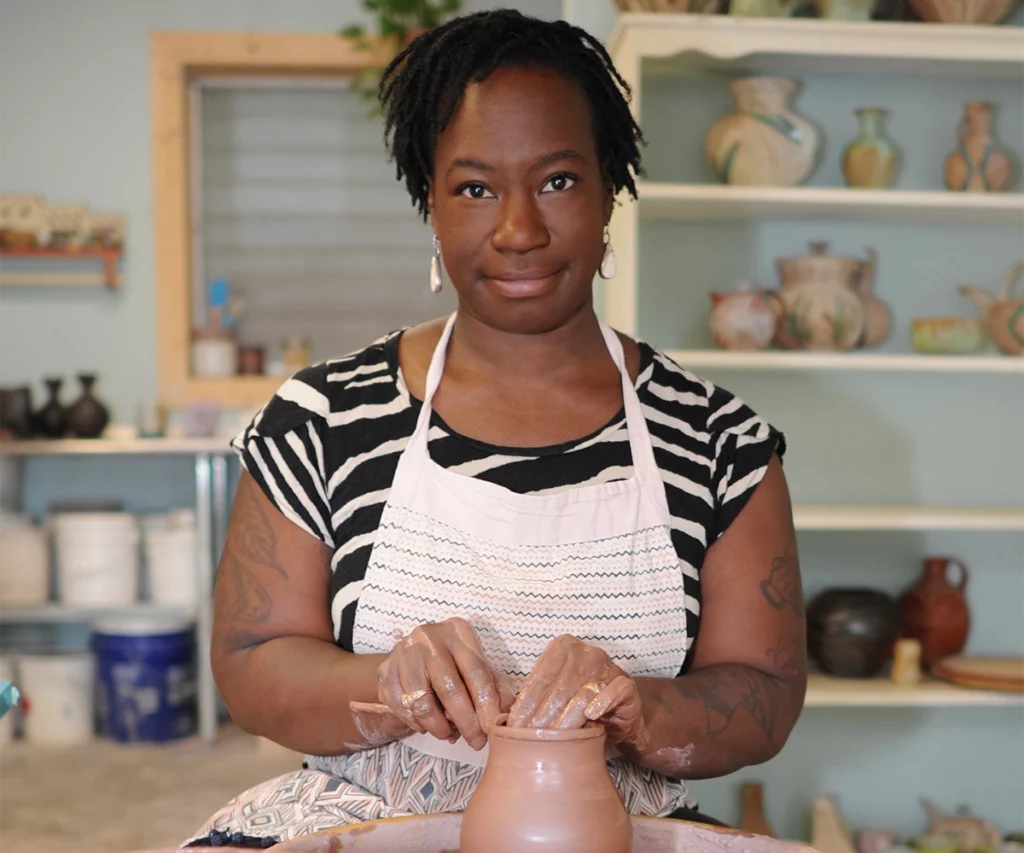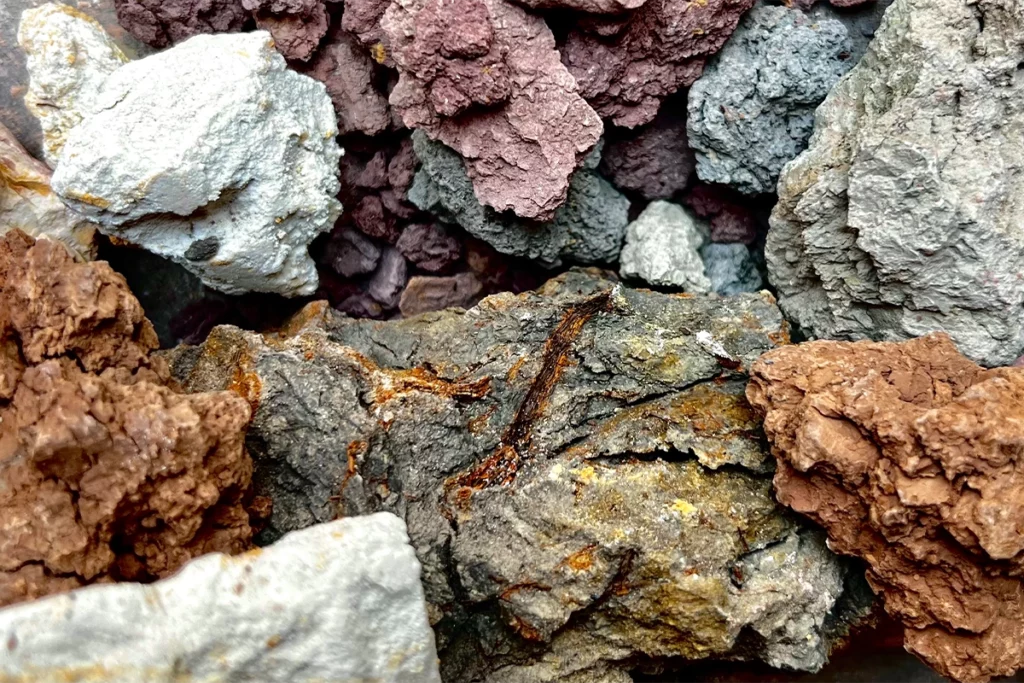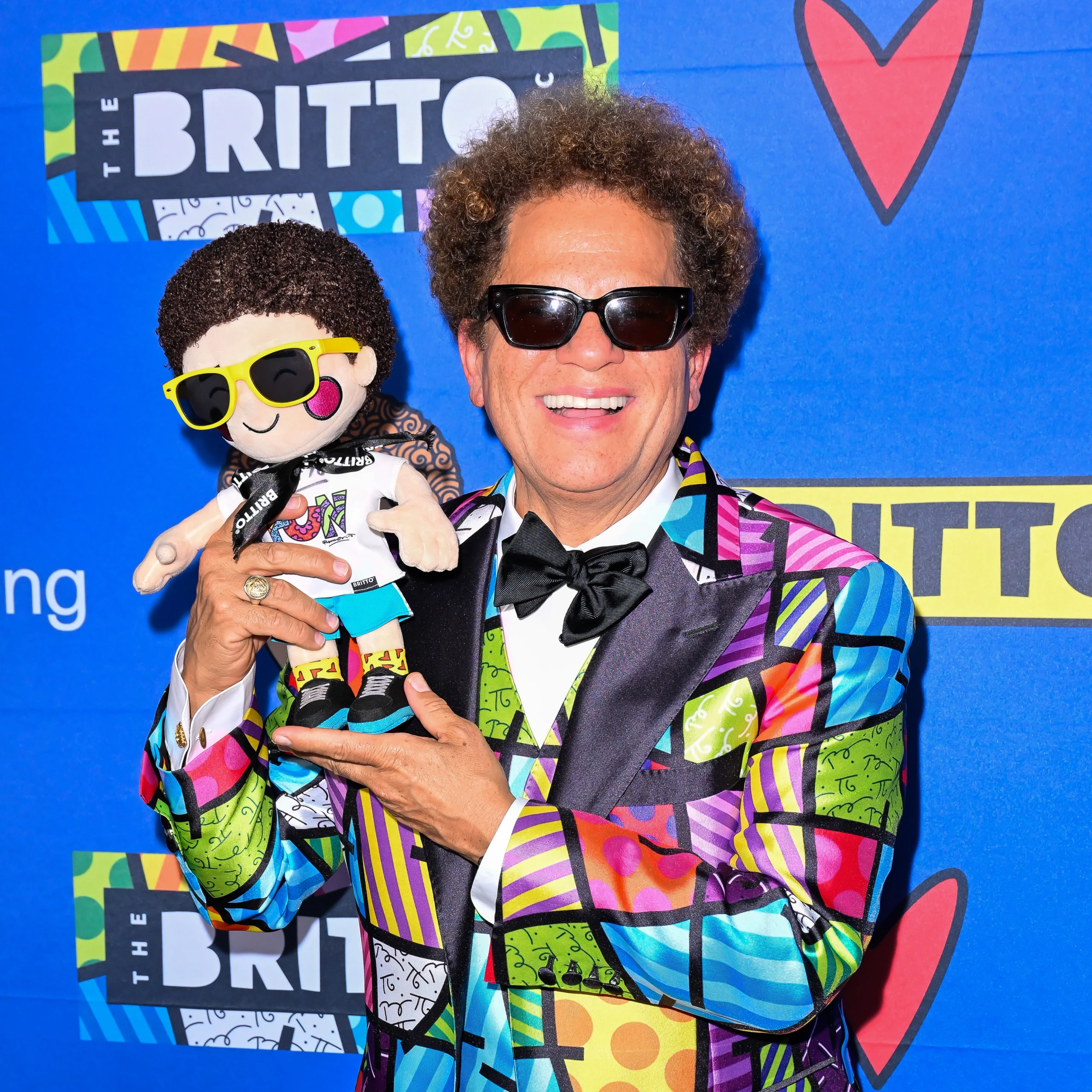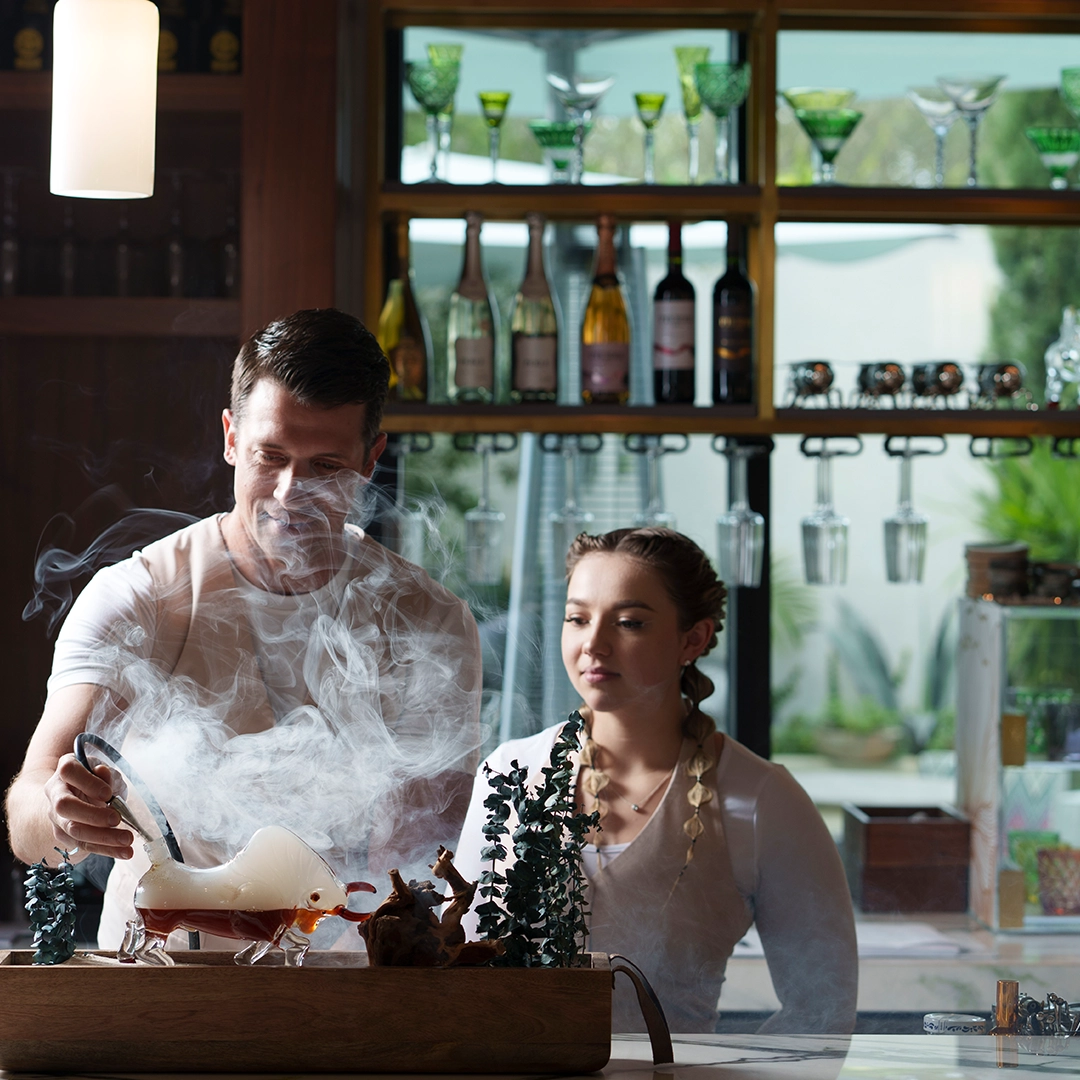by | June 25, 2025
Osa Atoe is Creating Modern Pottery With Traditional Methods in Sarasota
A Sarasota-based potter seeks to reunite with nature and shine a light on lost traditions throughout her work.

Pop art sculptor Claes Oldenburg once declared, “I am for an art that helps old ladies across the street,” in a famous 1961 essay. The sculptor wanted to honor “the possibilities of using anything in one’s surroundings … as a starting point for art.” That easily applies to Osa Atoe, who makes functional art used to drink coffee, pour iced tea, display flowers and serve ice cream while also radiating a visually distinctive quality. Her ceramics are designed for everyday use yet transcend that purpose in their embrace of tradition and the fundamental resonance of the common red clay she shapes.
“I mostly make functional pottery—but I’m constantly inspired by historical pottery forms,” says Atoe, who launched a career in New Orleans 10 years ago before resettling in Sarasota in 2020. It was a major transition in a creative life largely invested in music and organizing for activist groups.

Atoe spent her formative years involved in the punk scene, publishing the zine “Shotgun Seamstress,” touring in bands and promoting shows with a focus on Black, nonbinary and LGBTQ+ artists. “My parents are from Nigeria. My dad loves music. I was exposed to all kinds of things,” explains the artist, who grew up playing violin, “but I think that punk rock really spoke to me because it emphasized individual expression and urgency of expression … whether you’re being a musician or a potter or whatever it is.”
Coming of age in the 1990s, with everything from skate culture to the riot grrrl movement going full tilt, Atoe was drawn to punk as her entry point as an artist. It met her where she was.
So that’s why it’s important to me to use these materials and talk about it, because it’s one way to show people how disconnected we’ve become from nature.
—Osa Atoe
“In the ‘90s, it felt like everything had been done. Until today, people tell you that the best guitarist was Jimi Hendrix. If Picasso has already existed, if Basquiat has already existed, if Hendrix has already existed, what would be the point of making art today?” she asks. “I feel like the emphasis on what you as an individual can offer, your individual expression in punk—that was what was exciting to me, that it didn’t have to be technically perfect. Technical perfection in every medium has already been achieved. I think that’s the mentality that I was able to bring with me into clay.”

A spur-of-the-moment decision to take a wheel-throwing class eventually led to enrolling in a ceramics program at Louisiana State University. By 2015, Atoe was running a pottery business out of her New Orleans kitchen. “It was kind of a sharp turn,” she says.
Atoe’s work evokes an organic beauty grounded in an unfussy simplicity and the irresistible appeal of texture. Familiar patterns, like diamonds or rows of dots, recur in different ways, while earthy tones are contrasted by shades of turquoise, lime green and yellow. The pieces, listed for sale on her website, go for anywhere from $45 to $650.
Among other inspirations, Atoe’s work honors the Abuja Pottery Training Centre in Nigeria, where in the 1950s, “Western, Eastern and African influences all came together,” Atoe says. “I think that historical moment could be extrapolated.” One of the artist’s goals is to bring light to what contemporary American pottery training has ignored.
“People are aware that Native Americans have a long and rich cultural legacy in clay, but we rarely learn what those methods are,” she says. “We admire the end results, but we don’t learn about indigenous coil building methods or firing methods or anything like that.” The same can be said for African ceramics, which have been cast in a distant, historical context. Atoe takes this as a jumping-off point, adapting those influences into a contemporary context. Atoe chooses symmetrical geometric patterns for much of her work, which is comprised of pitchers, vases, mugs, bowls, pots and platters. It pleases the eye, she says, but it also transcends culture—speaking to a universality she likes to evoke.

It’s elemental, too, that the artist forages for her clay, which is abundant. “It’s dirt; it’s everywhere,” she says. “It’s just that we have lost touch with that. So that’s why it’s important to me to use these materials and talk about it, because it’s one way to show people how disconnected we’ve become from nature.”
Social media helped Atoe, who is in her mid-40s, grow her business. But after over a decade, she recently ditched Instagram, where she had 50,000 followers. “The algorithm is not letting me connect with these people,” she says. “Instead, it’s showing people AI and showing people sponsored content and showing people ads.” Atoe moved onto the Fediverse, the online sphere of open-source and advertising-free social networks like PeerTube, Friendica and Mastodon, where she posts images of her pieces and explores her process as user @potterybyosa. Although she’s building up from a fraction of her former base, “I’ve already gained the same level of interaction,” she says, “but there’s no algorithm standing between me and my audience.”

Florida has long beckoned Atoe. Pensacola was a frequented destination even before she moved to the state. “Because Louisiana doesn’t really have the same kind of beaches that Florida has,” she says. Being near the water is itself a creative boon. “There’s a lot of historical connection between clay and water in terms of just the way that pots were used to transport and collect water.” Louisiana, of course, is distinguished by its wetlands, but, as Atoe notes, “that blue, magical water that we have either in the Gulf or the springs is definitely inspiring to my artwork. And then in terms of the scene down here, Sarasota has a ton of artists and art resources, especially for a town of just (under) 60,000 people.”
Those aspects of nature and nurture help foster the sense of harmony and well-being Atoe hopes to imbue in both her pottery pieces and her practice.
“I have to embody those qualities in order for them to be present in the work,” she says. “I think that’s something that’s a little less tangible, but I think it has an effect. And I think it has an effect just because of the feedback about the work. There is something about the energy that goes into the work that is apparent to people who collect my pieces.
For more Florida artists, click here.
About the Author
Steve, a Tallahassee native and Flamingo contributor since 2017, has written about film, music, art and other popular culture for publications including The Wall Street Journal, The Washington Post, the Atlanta-Journal Constitution, GQ, and The Los Angeles Times. He is the artistic director for the Tallahassee Film Festival and writes a monthly film newsletter for Flamingo, Dollar Matinee.





